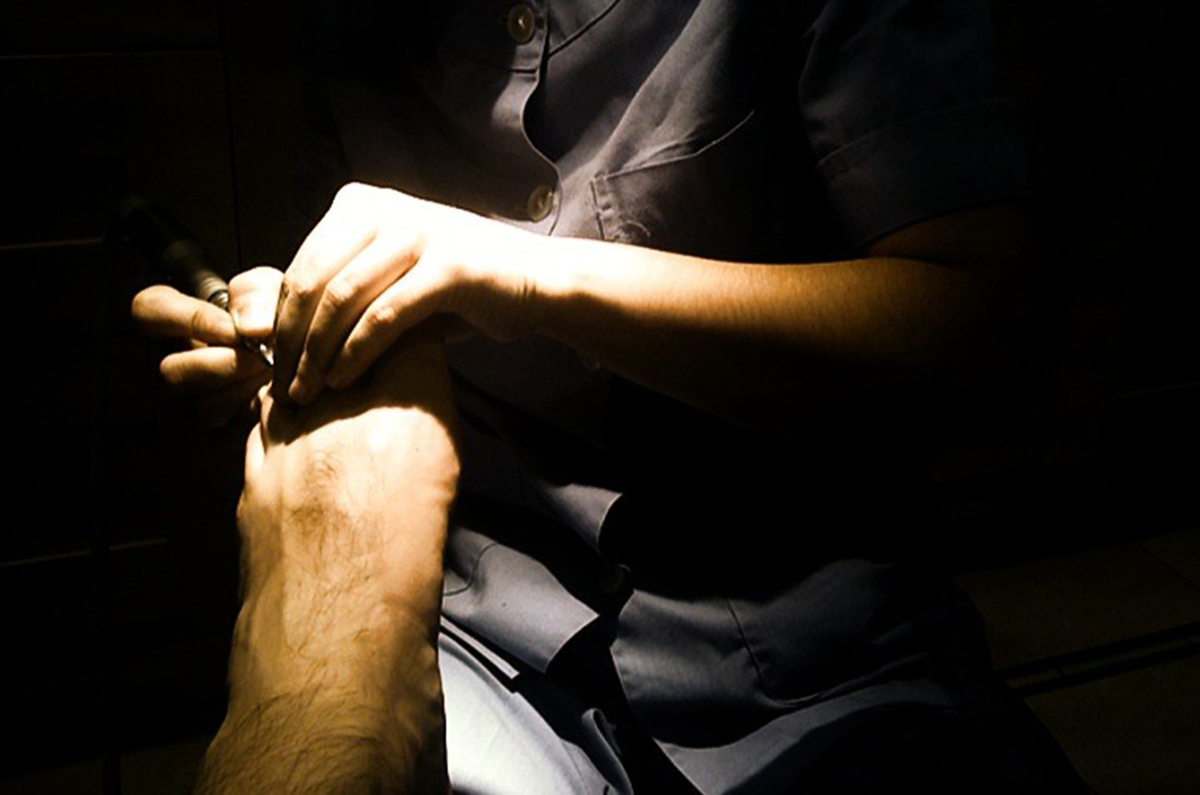Table of Contents
When diabetic skin wounds are detected early, they often are not difficult to treat. The doctor or podiatrist (foot specialist) removes affected tissue through a process called debridement, cutting away dead tissue so new, healthy tissue can take its place. Debridement sounds a little scary, but for most diabetics, because of nerve damage, it is usually painless. As long as there is still good circulation to the feet (the doctors usually feel for pulses in the feet), debridement and keeping the wound clean are all the treatment needed.

Not all diabetic wounds are infected. Some wounds do not require any kind of antibiotic or antibacterial treatment.
Sometimes doctors treat infection wounds with silver nitrate, or with topical antibiotics.
When the circulation is worse, debridement may not be enough. Doctors may recommend hyperbaric oxygen treatment. In this procedure, the patient is placed in a high-pressure chamber so that oxygen is essentially forced into the bloodstream. More oxygen reaches the affected tissue, and it heals faster.
The doctor may treat the wound with hormones to stimulate the growth of the skin. If the wound is clean and non-infected, sometimes the doctor will graft skin. Only as a last resort to avoid amputating the foot, however, have most doctors used preparations of cells harvested from the amniotic membrane, the innermost lining of the placenta, donated by mothers after giving birth. The baby is not harmed by the donation of the placenta, and the placenta is "scrubbed" of any potential microbial contamination before it is used to manufacture the wound treatment. The tissue used for the preparation EpiFix (made by MiMedx in Marietta, Georgia) is only accepted from mothers who have delivered live babies by Caesarian section.
What recent research has found is using human skin cells to as a first line of treatment for the very worst diabetic skin ulcers results in about a 90% cure rate after just four weeks of use (compared to 50% cure rates with a combination of other methods).
See Also: Types of Diabetic Neuropathy
More blood flows to the wound, in just a few weeks, and the skin is able to heal faster and more completely. The tissue also contains a variety of growth factors that stimulate the growth of skin on the foot, just as they stimulated the growth of skin on the fetus.
Treatment with products such as EpiFix, if you live in the USA (similar products are also approved for use in Canada) is not cheap. You are not likely to receive them unless you have private health insurance, military coverage, or Medicare. But if you have serious diabetic foot wound from which infection has been cleared that is stubbornly refusing to heal, EpiFix may be the answer for avoiding amputation.
- Koob TJ, Lim JJ, Massee M, Zabek N, Rennert R, Gurtner G, Li WW. Angiogenic properties of dehydrated human amnion/chorion allografts: therapeutic potential for soft tissue repair and regeneration. Vasc Cell. 2014 May 1. 6:10. doi: 10.1186/2045-824X-6-10. eCollection 2014. PMID: 24817999.
- Photo courtesy of Intermedichbo by Wikimedia Commons : sr.wikipedia.org/wiki/%D0%94%D0%B0%D1%82%D0%BE%D1%82%D0%B5%D0%BA%D0%B0:Dijabetesno_stopalo_2011_1.jpg
- Photo courtesy of Raúl Santos de la Cámara by Flickr : www.flickr.com/photos/zero0112/3653139131


Your thoughts on this